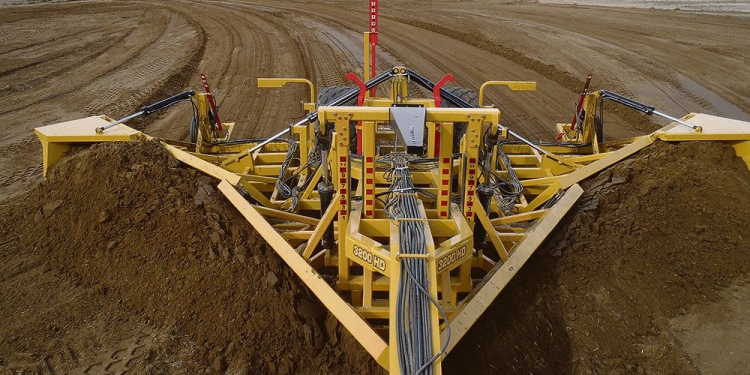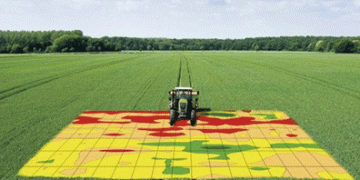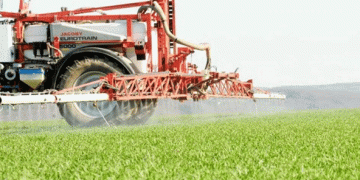V-Wing creates shallow ditches that farmers can farm right through, with a minimum of ditching passes
It bothers Swan River, Man., farmer Jeff Penner to see big water volumes churning and charging down a deep drainage ditch. Some farmers enjoy the sight and sound, but not Penner. All he sees and hears is soil erosion — tons and tons, inches upon inches, cubic yards by cubic yards of topsoil being removed from fields and deposited somewhere miles away. To provide farmers with a viable solution to the ongoing problem of water erosion, Penner envisioned a drainage ditch in which the exit point is dry. There would be no deluge flowing into the municipal ditch or across neighbours’ fields.
“The drain exit is dry because we make a wide sneaky shallow ditch that snakes around the field, lazily crawling from one pothole to the next as it gradually finds its way down toward the edge,” said Penner. “When water crosses a drier patch, it soaks in. Water that might otherwise have caused a downstream problem is kept at home. It’s almost a form of terracing to slow down the water.”
However, turning that radical vision into reality first required some serious fabrication time in his shop because he needed some kind of new scraper concept — some arrangement of blades and hydraulic cylinders capable of performing intricate soil moving operations. When the smoke finally cleared, he was ready to pull his prototype V-Wing 32-foot drainage machine into the field.
The automatic slope control (ASC) technology is particularly important in turning his slow flow concept into reality. Instead of being tied to a straight-line ditch, ASC keeps the blades at the correct cutting depth as the operator follows a zigzag path from pothole to pothole, heading toward the ultimate destination, which is the field edge. It produces a uniform slope the length of the ditch so there are no ponds or low spots. ASC uses slope sensors that send messages to a monitor, which sends messages to the hydraulic valves controlling the blades.
“For example, cut a ditch that drops 10 feet from a high point down to the edge where it dumps into a bigger drain or a consolidated pond. Conventional thinking says you cut a straight line with a half-mile ditch. Water will flow fast. You’ll get it off the field quickly. But very little water soaks into the soil, have significant soil erosion and the risk of down-stream flooding.

“With Automatic Slope Control you can meander around in the field for a mile and a half and stretch that 10 foot drop out over that whole distance so water infiltrates into the soil. You’ll have little or no erosion and little or no water leaving the field. We all know crop will suffer in the depressions. It’s easy to locate them on your maps, so you can pull some soil into them so you aren’t wasting inputs. There’re two schools of thought on that. Either fill those little potholes by dragging in some dirt or try make a ditch to get the water out. The V-Wing machine does it either way or both ways.

“Some people think we create earth dikes at the edges that slow water flow, but that isn’t the case. Our wings work more like grader blades. They’re hydraulically controlled to work in all kinds of different directions and angles. You can go all left, all right, V-plow or any combination in between. That way you keep grading the soil away from the ditch, feathering it out to keep a smooth edge.”
Penner concedes the V-Wing is complex to operate. It does ditching, windrowing, grading, dragging dirt and scraper work. He installs controls on the wings so the operator can set them at one-degree slope or two-degree slope, and the controller will automatically maintain that slope on the sides of the ditch. The gradual side slopes don’t hurt seeding, spraying or harvest equipment. In most soil conditions, the V-Wing 3200 HD can make a four-inch deep cut at five m.p.h. pulled by a 450 horsepower tractor. The smaller 2100 HD needs 300 h.p. to make a four-inch cut at that speed. In field tests, the 2100HD can cut and finish a flat bottom ditch a half-mile long and 40 feet across in 30 minutes. After making the main drain and pushing the spoil dirt up the edges, the V-Wing returns to make one pass on each edge, straddling the soil and winging it out away from the ditch.






